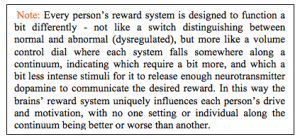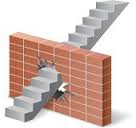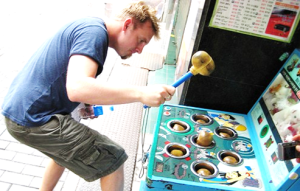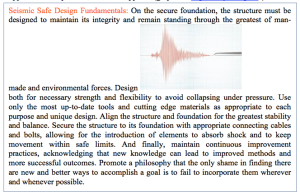The Stand Model of Addiction &
Full Recovery Learning Method ©™ Pat.Pending
The Model
For decades, a universally accepted model has defined addiction as a Mesolimbic Dopamine dysregulation leading people to substance abuse and addiction – a chronic and relapsing disease/condition. In layman’s terms, this says that a segment of the population has a genetic brain chemical disorder that that leads them to use, grow dependent on and ultimately become addicted to harmful substances, a condition they cannot overcome but must manage daily for life.
This established model of addiction has become deeply entrenched throughout society, fuels a $400billion addiction industry, employs over a million people, is not supported by objective research, leads to great harm, and is wrong.
The Stand Model defines addiction as any form of extreme harmful behavior that people, with a neurological need for intense stimuli to feel satisfying rewards, choose, learn, and grow dependent on to feel pleasure. They ultimately making the behavior part of their identity when their mature executive brain region bonds with it. People with addiction remain capable of learning new, productive intense behaviors to replace their addicted behaviors, releasing them to enjoy fruitful lives, addiction free.
The Stand Model is supported by objective research, without bias of entrenched beliefs and assumptions. The model remains open to continuous update and improvement as on-going research reveals new information and understanding.
The Driven Brain
About 20% of the population is characterized by a more driven nature than the average person. Behaviorally, we know them as the people that pursue more extreme, risky, impulsive or sensational behav iors and activities. Neurologically, they are distinguished by a mesolimbic reward system that releases/transmits comparatively lower volumes of neurotransmitter dopamine in response to a control stimulus, with the effect that they feel comparably lower levels of reward or pleasure. For them to experience a meaningful degree of reward – a need shared by everyone – the people in this segment require more intense stimuli capable of releasing sufficient neurotransmitter dopamine to communicate an adequate reward: Think roller coaster ride vs. walk in the park.
iors and activities. Neurologically, they are distinguished by a mesolimbic reward system that releases/transmits comparatively lower volumes of neurotransmitter dopamine in response to a control stimulus, with the effect that they feel comparably lower levels of reward or pleasure. For them to experience a meaningful degree of reward – a need shared by everyone – the people in this segment require more intense stimuli capable of releasing sufficient neurotransmitter dopamine to communicate an adequate reward: Think roller coaster ride vs. walk in the park.
 For people in this segment, the effect of their more demanding reward system is to drive them to seek more intense forms of behavior. It does not direct them toward any particular activity, nor will everyone with this driven nature find the same intense behaviors to be rewarding. What they all do share is the same compelling sense that average will never be enough; they will always need to do more, go faster, reach farther.
For people in this segment, the effect of their more demanding reward system is to drive them to seek more intense forms of behavior. It does not direct them toward any particular activity, nor will everyone with this driven nature find the same intense behaviors to be rewarding. What they all do share is the same compelling sense that average will never be enough; they will always need to do more, go faster, reach farther.
Choosing The High Or Low Road
Generally, when we think about highly driven people and the extreme behaviors they depend on, we imagine all sorts of harmful activities like drugs and alcohol. But harmful substances are only one option among the broad selection of intensely rewarding alternatives. The field of choices ranges
 from productive roles as first responders, in extreme athletics, as exceptional performers in academics or scientific discovery, all the way over to a destructive array of drugs, alcohol, anorexia – bulimia, cutting, gambling and more. Although the rewards from the harmful extremes generally are short-lived and carry negative repercussions, they do tend to be easier, faster, a sure thing every time and quite often, are perceived by many as being “cooler”.
from productive roles as first responders, in extreme athletics, as exceptional performers in academics or scientific discovery, all the way over to a destructive array of drugs, alcohol, anorexia – bulimia, cutting, gambling and more. Although the rewards from the harmful extremes generally are short-lived and carry negative repercussions, they do tend to be easier, faster, a sure thing every time and quite often, are perceived by many as being “cooler”.
What actually directs the driven persons’ selection is their individual character – their faith, values, morals, beliefs, interests, priorities and personality. This does not mean that people who make harmful choices have bad character. It does mean that something in their character accommodates, justifies or points to their selection. It might be their weakening faith, or their lack of faith, that leaves them without a clear moral compass. Perhaps they’ve adopted society’s more worldly and conditional values, maybe their priorities, rebellious personalities or compelling outside influences encourage their risky choices.
To be clear, their brains’ reward function is responsible for their driven nature. It does not drive them to any particular behavior, and it certainly is not programmed to be addicted.
The Bonding
Regardless the impetus, as these people choose, repeat and learn to depend on their chosen extreme behavior to deliver the reward they need, their character and lifestyle grow more aligned with it, closing out conflicting influences, strengthening new ties, until it becomes what they crave most in life. Neurologically, this is the point that their reward pathway extends to the mature brain’s prefrontal cortex where it bonds with the behavior, assigning it true meaning in the persons’ identity.
Though this bond is strong, it need not be lasting, and by no objective neurological evidence or rationale is it permanent. Our brains remain highly plastic well into our later years, ready to change as we choose and learn new behaviors, and as we redefine our character and identity to align with them.
In fact, the greatest obstacle to a person successfully replacing their addicted harmful behavior and aligned character with positive and productive choices is the persons’ firm belief that they cannot change.
 As a product of society’s 43-year war on drugs, drug education programs, and the teachings of current treatment methods, society has been indoctrinated in the ideas shaping the established addiction model: People with addiction have a brain chemical deficiency; the addicted person’s brain is irreversibly bonded with the addiction; the addicted person must abstain from and manage their addicted behaviors daily for life.
As a product of society’s 43-year war on drugs, drug education programs, and the teachings of current treatment methods, society has been indoctrinated in the ideas shaping the established addiction model: People with addiction have a brain chemical deficiency; the addicted person’s brain is irreversibly bonded with the addiction; the addicted person must abstain from and manage their addicted behaviors daily for life.
For people to successfully break free of addiction they must know that the bonds can be broken.
They must know that their brains are not deficient, but are purposefully designed to drive them beyond the norm. And they must know that as they once chose and learned their harmful behaviors, they now can choose differently and learn to enjoy life, free of addiction.
Who Is At Risk?
Not surprisingly, young people (less than 25 years) as a whole are at greater risk of making ha rmful behavior choices. The brain region housing their faith, judgment, decision-making, values and beliefs is not yet fully formed, and their personal character is still a work in progress. In fact, over 80% of all young people will rationalize their decision to experiment with drugs and alcohol before they are 17 years old – regardless of upbringing.
rmful behavior choices. The brain region housing their faith, judgment, decision-making, values and beliefs is not yet fully formed, and their personal character is still a work in progress. In fact, over 80% of all young people will rationalize their decision to experiment with drugs and alcohol before they are 17 years old – regardless of upbringing.
While nearly all will experiment, those young people with a highly driven nature are more vulnerable to repeating, and over time growing dependent on the harmful behaviors. Because unlike their peers with  average reward systems and corresponding desires, the driven youths cannot return to everyday (simple) rewarding activities and feel satisfied. Unless these young people are prepared to resume established, extremely rewarding and productive behaviors as found in competitive sports, compelling youth groups, the performing arts, cutting edge programs in science or design, exceptional academics, or other forms of satisfying intense activity, the next time they have an unmet, urgent need for reward, they will know a sure way to find it. And each time they return for more of the thrill, their malleable character will bend further to accommodate and eventually reinforce their choice.
average reward systems and corresponding desires, the driven youths cannot return to everyday (simple) rewarding activities and feel satisfied. Unless these young people are prepared to resume established, extremely rewarding and productive behaviors as found in competitive sports, compelling youth groups, the performing arts, cutting edge programs in science or design, exceptional academics, or other forms of satisfying intense activity, the next time they have an unmet, urgent need for reward, they will know a sure way to find it. And each time they return for more of the thrill, their malleable character will bend further to accommodate and eventually reinforce their choice.
In truth, any highly driven person with a pressing need for reward, a weakened faith, a chink in their character, and a lack or loss of preferred extremely satisfying productive behaviors, is at risk of choosing among the selection of quick and easy harmful behaviors to meet their immediate need – and then going back for more. That said, over 70% of adult addicts report that they first grew to depend on their addicted behavior in their teens and never let go.
It’s Not About Abstinence And Managing Behavior
When people become addicted to harmful behaviors, we encourage them to abstain from the behavior. But time and again, we watch as one dependent and harmful form of behavior is successfully restrained or removed, only to be replaced by another, sometimes more harmful form of extreme behavior. It’s like a cruel game of whack-a-mole, where each attempt to knock down a dangerous addiction pushes a new and often more threatening enemy to the surface.
 Unfortunately, when we focus on the persons’ harmful behavior as the thing to beat or to manage, we overlook their underlying drive for extreme stimuli and its reward. No matter how much time and effort we invest in encouraging addicted people to change their behavior, unless the new ways also provide for their needed rewards, we can expect to fail and fail again. Even when pharmaceuticals are introduced in attempt to regulate brain activity and drives, or techniques are employed to address past traumas and calm impulses, until the need is met and as long as the individuals’ faith and personal character remain aligned with their addiction and lifestyle, they will continue to choose among extreme behaviors consistent with that character.
Unfortunately, when we focus on the persons’ harmful behavior as the thing to beat or to manage, we overlook their underlying drive for extreme stimuli and its reward. No matter how much time and effort we invest in encouraging addicted people to change their behavior, unless the new ways also provide for their needed rewards, we can expect to fail and fail again. Even when pharmaceuticals are introduced in attempt to regulate brain activity and drives, or techniques are employed to address past traumas and calm impulses, until the need is met and as long as the individuals’ faith and personal character remain aligned with their addiction and lifestyle, they will continue to choose among extreme behaviors consistent with that character.
So often we are duped into thinking all the effort’s paid off, that the addiction is being managed effectively, only to find that another slipped in under the radar to take its place. It’s surprising just how many newly selected harmful extremes can go undetected for months before their significant damage becomes visible.
Standing Through Life’s Quakes
It is only when th e persons’ full character has been regenerated and brought into alignment with their chosen array of highly rewarding, productive replacement behaviors, that they are adequately equipped to stand up to the temptations and forces of the world. It’s not a matter of abstinence, of managing behavior, or dedication to a program.
e persons’ full character has been regenerated and brought into alignment with their chosen array of highly rewarding, productive replacement behaviors, that they are adequately equipped to stand up to the temptations and forces of the world. It’s not a matter of abstinence, of managing behavior, or dedication to a program.
Anyone who doubts this basic truth has only to look at the people we send back into society following treatment, with their fresh new resolve and commitment to abstain from old behaviors. Among those less than 25 years old – the fastest growth segment entering addiction care – 90% quickly relapse following treatment, while over 60% of the mature adults fail as well.
Even when they are armed with positive steps, support groups and encouraging verses, it’s like placing an at tractive, but hastily assembled house on a crumbling foundation, smack dab on the center of the San Andreas Fault.
tractive, but hastily assembled house on a crumbling foundation, smack dab on the center of the San Andreas Fault.
At the first tremor, it’s going to collapse.
In fact, we must approach the challenge of working with people to build or rebuild their character and lifestyle in much the same way architects and engineers design earthquake safe buildings or retrofit older structures to become earthquake safe. Whether we’re addressing people or buildings, both begin with a sound foundation, carefully designed and constructed to withstand the worst of life’s quakes, blasts and storms, and safely support